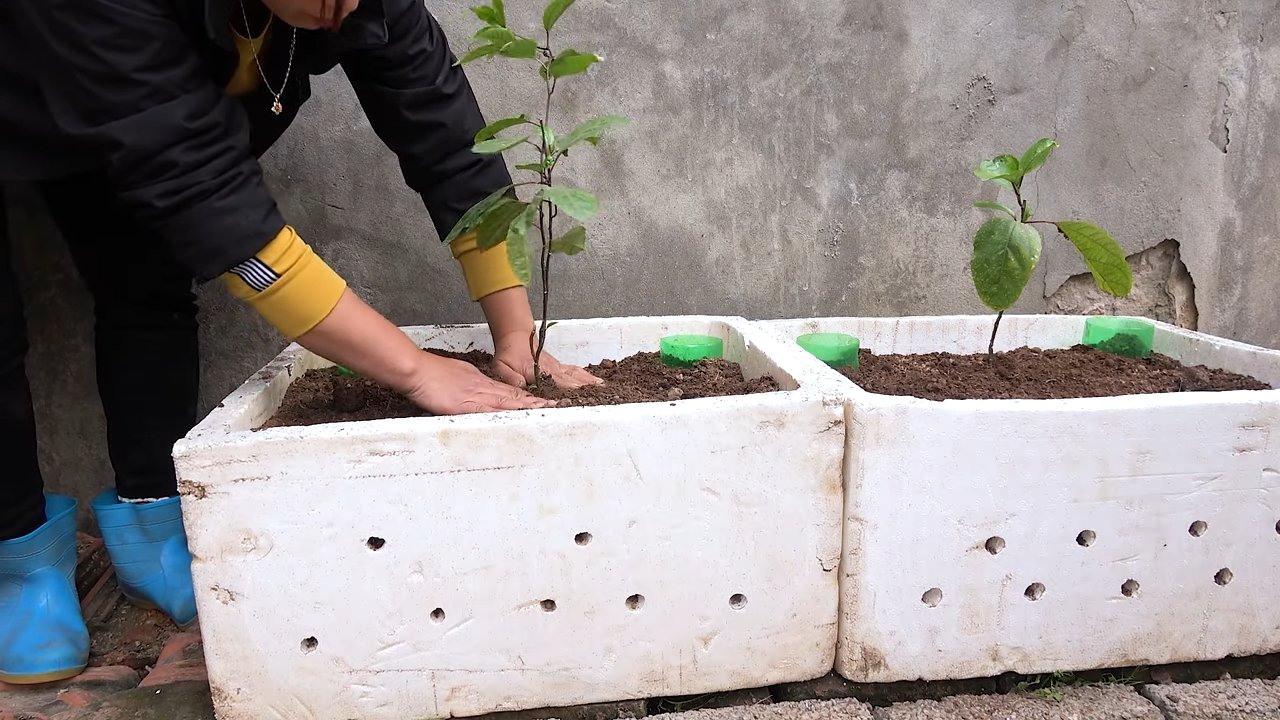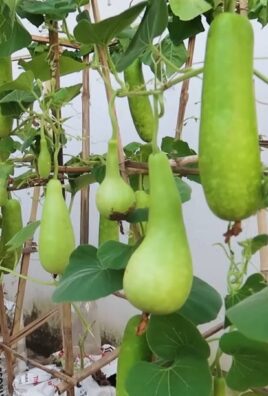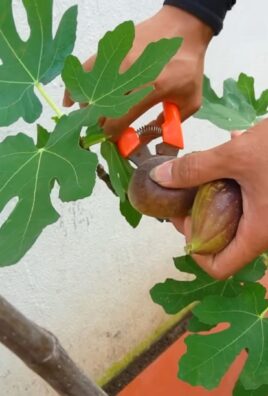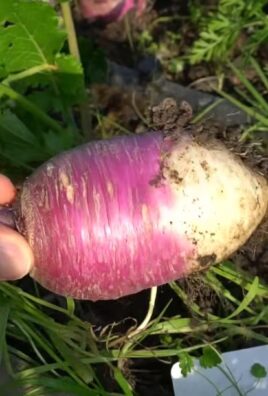Grow Passion Fruit Terrace: Imagine stepping onto your terrace, not just to enjoy the view, but to pluck a ripe, fragrant passion fruit straight from the vine. Sounds like a tropical dream, right? Well, it doesn’t have to be! This DIY guide is your passport to transforming your terrace into a lush, passion fruit paradise, even if you’re a complete beginner.
The passion fruit, with its vibrant flavor and exotic aroma, has a rich history, originating in South America and spreading across the globe, becoming a symbol of tropical abundance and culinary delight. For centuries, it has been cherished for its delicious fruit and medicinal properties. Now, you can bring that same sense of abundance to your own home.
Why should you embark on this DIY adventure? Because fresh, homegrown passion fruit tastes infinitely better than anything you can buy at the store! Plus, creating your own passion fruit terrace is a rewarding and sustainable way to add beauty and flavor to your life. We’ll show you simple, effective techniques to grow passion fruit terrace successfully, regardless of your experience level. From choosing the right variety to providing the perfect support system, we’ve got you covered. Let’s get started and turn your terrace into a thriving, passion fruit haven!

Transform Your Terrace into a Passion Fruit Paradise: A DIY Guide
Hey there, fellow plant enthusiasts! Ever dreamt of stepping onto your terrace and being greeted by the intoxicating aroma of passion fruit blossoms, knowing that a delicious, homegrown treat is just around the corner? Well, dream no more! I’m here to guide you through the process of creating your very own passion fruit haven, right on your terrace. It’s easier than you think, and the rewards are oh-so-sweet!
Choosing the Right Passion Fruit Variety
Before we dive into the nitty-gritty, let’s talk about passion fruit varieties. Not all passion fruit are created equal, and some are better suited for container growing than others.
* Purple Passion Fruit (Passiflora edulis): This is the most common variety and a great choice for beginners. It’s relatively cold-hardy and produces delicious, tangy fruit.
* Yellow Passion Fruit (Passiflora edulis flavicarpa): This variety is more vigorous and produces larger, more acidic fruit. It’s best suited for warmer climates.
* Sweet Granadilla (Passiflora ligularis): This variety has a milder, sweeter flavor and is less acidic than the purple or yellow varieties. It’s a good option if you prefer a less tart passion fruit.
I personally recommend starting with the purple passion fruit. It’s readily available, relatively easy to care for, and produces a fantastic yield.
Gathering Your Supplies
Okay, now that we’ve chosen our star player (the passion fruit!), let’s gather the necessary supplies. This is where the “DIY” part really kicks in!
* Large Container: Passion fruit vines need room to grow, so choose a container that’s at least 24 inches in diameter and 24 inches deep. A half-barrel planter works perfectly! Make sure it has drainage holes.
* High-Quality Potting Mix: Don’t skimp on the potting mix! Use a well-draining mix specifically formulated for containers. I like to use a blend of potting soil, compost, and perlite for optimal drainage and nutrient retention.
* Trellis or Support Structure: Passion fruit vines are climbers, so they need something to climb on. A sturdy trellis, a fence, or even a repurposed ladder will do the trick. Make sure it’s tall enough to accommodate the vine’s growth.
* Passion Fruit Seedling or Cutting: You can either start from seed or purchase a seedling or cutting from a reputable nursery. Seedlings are generally more readily available, but cuttings will produce fruit sooner.
* Gardening Gloves: Protect your hands!
* Pruning Shears: For trimming and shaping the vine.
* Watering Can or Hose: For watering your passion fruit.
* Fertilizer: A balanced fertilizer specifically formulated for flowering plants.
* Optional: Mulch (such as wood chips or straw) to help retain moisture and suppress weeds.
Planting Your Passion Fruit
Alright, let’s get our hands dirty! This is the most crucial step, so pay close attention.
1. Prepare the Container: Make sure your container has adequate drainage holes. If not, drill a few more. Add a layer of gravel or pebbles to the bottom of the container to further improve drainage.
2. Fill the Container with Potting Mix: Fill the container with your high-quality potting mix, leaving a few inches of space at the top.
3. Plant the Seedling or Cutting: Gently remove the passion fruit seedling or cutting from its nursery pot. Loosen the roots slightly to encourage them to spread. Dig a hole in the center of the potting mix and carefully place the seedling or cutting in the hole. Make sure the top of the root ball is level with the surrounding soil.
4. Backfill with Potting Mix: Fill the hole with potting mix and gently firm the soil around the base of the plant.
5. Water Thoroughly: Water the newly planted passion fruit thoroughly until water drains out of the drainage holes. This will help settle the soil and hydrate the roots.
6. Add Mulch (Optional): Apply a layer of mulch around the base of the plant to help retain moisture and suppress weeds.
7. Position the Trellis: Place the trellis or support structure behind the passion fruit vine. Gently guide the vine towards the trellis and tie it loosely with soft twine or plant ties.
Caring for Your Passion Fruit Vine
Now that your passion fruit is planted, it’s time to provide it with the care it needs to thrive.
* Sunlight: Passion fruit vines need at least 6-8 hours of sunlight per day. Choose a sunny spot on your terrace that receives plenty of direct sunlight.
* Watering: Water your passion fruit regularly, especially during hot, dry weather. The soil should be consistently moist, but not waterlogged. Check the soil moisture by sticking your finger into the soil. If the top inch feels dry, it’s time to water.
* Fertilizing: Feed your passion fruit vine with a balanced fertilizer every 4-6 weeks during the growing season (spring and summer). Follow the instructions on the fertilizer package.
* Pruning: Prune your passion fruit vine regularly to encourage branching and fruit production. Remove any dead, damaged, or diseased growth. You can also prune to control the size and shape of the vine. The best time to prune is after the fruiting season.
* Pollination: Passion fruit flowers are typically pollinated by bees or other insects. However, if you’re not seeing much fruit production, you may need to hand-pollinate the flowers. Use a small paintbrush to transfer pollen from the male parts of the flower (anthers) to the female part (stigma).
* Pest and Disease Control: Keep an eye out for pests and diseases. Common pests include aphids, spider mites, and scale. Treat infestations with insecticidal soap or neem oil. Common diseases include fungal infections. Prevent fungal diseases by providing good air circulation and avoiding overwatering.
Training Your Passion Fruit Vine
Training your passion fruit vine to grow along the trellis is essential for maximizing fruit production and creating a beautiful display.
1. Guide the Vine: As the vine grows, gently guide it towards the trellis and tie it loosely with soft twine or plant ties.
2. Encourage Branching: Pinch back the tips of the main stems to encourage branching. This will create a fuller, more productive vine.
3. Remove Suckers: Remove any suckers that grow from the base of the plant. These suckers will steal energy from the main vine.
4. Maintain Air Circulation: Prune the vine to maintain good air circulation. This will help prevent fungal diseases.
Harvesting Your Passion Fruit
The moment you’ve been waiting for! Harvesting your own homegrown passion fruit is incredibly rewarding.
1. Look for Ripe Fruit: Passion fruit are ripe when they turn from green to purple or yellow, depending on the variety. The fruit will also become slightly wrinkled and heavy.
2. Harvest the Fruit: Gently twist the fruit from the vine. If it doesn’t come off easily, it’s not quite ripe yet.
3. Enjoy Your Harvest: Passion fruit can be eaten fresh, used in juices, smoothies, desserts, and more!
Troubleshooting Common Problems
Even with the best care, you might encounter some challenges along the way. Here are some common problems and how to address them:
* Lack of Fruit: This could be due to a number of factors, including insufficient sunlight, poor pollination, or lack of nutrients. Make sure your passion fruit is getting enough sunlight, hand-pollinate the flowers if necessary, and fertilize regularly.
* Yellowing Leaves: This could be a sign of overwatering, underwatering, or nutrient deficiency. Check the soil moisture and adjust your watering accordingly. Fertilize with a balanced fertilizer.
* Pest Infestations: Treat pest infestations with insecticidal soap or neem oil.
* Fungal Diseases: Prevent fungal diseases by providing good air circulation and avoiding overwatering. Treat fungal diseases with a fungicide.
Overwintering Your Passion Fruit
If you live in a climate with cold winters, you’ll need to protect your passion fruit vine from frost.
* Move the Container Indoors: If possible, move the container indoors to a bright, sunny location.
* Protect from Frost: If you can’t move the container indoors, wrap the vine in burlap or horticultural fleece to protect it from frost.
* Reduce Watering: Reduce watering during the winter months. The soil should be kept slightly moist, but not waterlogged.
* Don’t Fertilize: Don’t fertilize during the winter months.
Enjoying the Fruits (Literally!) of Your Labor
Growing passion fruit on your terrace is a truly rewarding experience. Not only will you have a beautiful, fragrant vine to enjoy, but you’ll also

Conclusion
So, there you have it! Transforming your outdoor space into a vibrant, passion fruit-laden paradise is not only achievable but also incredibly rewarding. This DIY approach to creating a thriving passion fruit terrace offers a unique blend of cost-effectiveness, customization, and the sheer joy of nurturing your own food source. Forget expensive landscaping projects or relying solely on store-bought fruit; with a little effort and these simple techniques, you can cultivate a flourishing passion fruit haven right at home.
The beauty of this project lies in its adaptability. Feel free to experiment with different trellis designs to suit your aesthetic preferences and the available space. Consider incorporating companion plants like basil or marigolds to deter pests naturally and enhance the overall health of your passion fruit vines. For those living in cooler climates, selecting cold-hardy passion fruit varieties or utilizing container gardening techniques to bring your plants indoors during the winter months can extend the growing season and ensure a bountiful harvest year after year.
Don’t be afraid to get creative with your support structures. Repurposed materials like old ladders, metal fencing, or even sturdy branches can be transformed into charming and functional trellises. The key is to provide ample support for the vigorous vines as they climb and spread. Remember to prune regularly to encourage healthy growth and maximize fruit production.
But perhaps the most compelling reason to embark on this DIY adventure is the unparalleled flavor of homegrown passion fruit. The taste of a sun-ripened passion fruit, bursting with tangy sweetness, is simply unmatched by anything you can find in a supermarket. Imagine enjoying fresh passion fruit juice, smoothies, or desserts made with fruit harvested directly from your own terrace. It’s a truly satisfying experience that connects you to the natural world and provides a delicious and healthy treat.
We strongly encourage you to give this DIY passion fruit terrace project a try. It’s a fantastic way to add beauty, fragrance, and delicious fruit to your outdoor space. And more importantly, it’s a sustainable and rewarding way to connect with nature and enjoy the fruits (literally!) of your labor.
Once you’ve created your own passion fruit paradise, we’d love to hear about your experience! Share your photos, tips, and challenges in the comments below. Let’s build a community of passionate passion fruit growers and inspire others to transform their spaces into thriving edible landscapes. Your insights could be invaluable to someone just starting out, and together, we can unlock the secrets to growing the most delicious and abundant passion fruit possible. So, grab your gardening gloves, gather your materials, and get ready to embark on a journey of passion fruit cultivation! Let’s see those amazing passion fruit terraces!
Frequently Asked Questions (FAQ)
What is the best location for my passion fruit terrace?
Passion fruit vines thrive in sunny locations that receive at least 6-8 hours of direct sunlight per day. Choose a spot that is sheltered from strong winds, as these can damage the delicate vines and flowers. Well-draining soil is also crucial to prevent root rot. If your soil is heavy clay, amend it with compost and other organic matter to improve drainage. Consider the mature size of the vine when selecting a location, ensuring it has ample space to climb and spread. A south-facing wall or fence is often an ideal location, as it provides warmth and protection.
What type of trellis should I use for my passion fruit vine?
The type of trellis you choose will depend on your personal preferences and the available space. A sturdy wire trellis is a popular and effective option, as it provides ample support for the vines to climb. You can also use a wooden trellis, a chain-link fence, or even a repurposed structure like an old ladder. The key is to ensure that the trellis is strong enough to support the weight of the mature vine and its fruit. The spacing between the wires or slats should be wide enough to allow the vines to easily grip and climb. Consider the aesthetic appeal of the trellis as well, as it will be a prominent feature in your garden.
How often should I water my passion fruit vine?
Passion fruit vines need regular watering, especially during hot and dry weather. Water deeply and thoroughly, allowing the soil to dry slightly between waterings. Avoid overwatering, as this can lead to root rot. Mulching around the base of the vine can help to retain moisture and suppress weeds. During the winter months, reduce watering frequency, as the vine will be less active. Observe the leaves of the vine for signs of stress, such as wilting or yellowing, which can indicate either underwatering or overwatering.
How do I fertilize my passion fruit vine?
Passion fruit vines are heavy feeders and benefit from regular fertilization. Use a balanced fertilizer that is specifically formulated for fruit-bearing plants. Apply the fertilizer according to the manufacturer’s instructions, typically every 4-6 weeks during the growing season. You can also supplement with organic fertilizers like compost tea or fish emulsion. Avoid over-fertilizing, as this can lead to excessive vegetative growth at the expense of fruit production. Monitor the health of the vine and adjust the fertilization schedule as needed.
How do I prune my passion fruit vine?
Pruning is essential for maintaining the health and productivity of your passion fruit vine. Prune regularly to remove dead, damaged, or diseased growth. Also, prune to control the size and shape of the vine and to encourage branching. The best time to prune is after the main fruiting season. Remove any suckers that grow from the base of the vine, as these can divert energy away from the main plant. When pruning, use sharp, clean pruning shears to make clean cuts.
What are some common pests and diseases that affect passion fruit vines?
Passion fruit vines can be susceptible to various pests and diseases, including aphids, spider mites, scale insects, and fungal diseases like root rot and fusarium wilt. Regularly inspect your vine for signs of infestation or disease. Treat pests with insecticidal soap or neem oil. Prevent fungal diseases by ensuring good drainage and air circulation. Remove any infected leaves or stems promptly. Consider using organic pest control methods to minimize the use of harmful chemicals.
How long does it take for a passion fruit vine to produce fruit?
Passion fruit vines typically begin to produce fruit within 12-18 months of planting. However, the exact time frame can vary depending on the variety, growing conditions, and overall health of the vine. Ensure that your vine receives adequate sunlight, water, and nutrients to promote fruit production. Pollination is also essential for fruit set. If you are not seeing fruit, you may need to hand-pollinate the flowers.
Can I grow passion fruit in a container?
Yes, you can grow passion fruit in a container, especially if you live in a cooler climate where the vine needs to be brought indoors during the winter. Choose a large container with good drainage. Use a well-draining potting mix. Provide a trellis or other support structure for the vine to climb. Water and fertilize regularly. Container-grown passion fruit vines may require more frequent watering and fertilization than those grown in the ground.
What are some different varieties of passion fruit?
There are several different varieties of passion fruit, each with its own unique characteristics. Some popular varieties include ‘Purple Passion’, ‘Yellow Passion’, and ‘Frederick’. ‘Purple Passion’ is known for its sweet and tangy flavor. ‘Yellow Passion’ is larger and more acidic. ‘Frederick’ is a hybrid variety that is known for its disease resistance and high yields. Choose a variety that is well-suited to your climate and growing conditions.
How do I know when passion fruit is ripe?
Passion fruit is ripe when it changes color and falls from the vine. The skin may be slightly wrinkled. The fruit should have a strong, fragrant aroma. You can also gently shake the fruit to see if you can hear the seeds rattling inside. Ripe passion fruit can be stored at room temperature for a few days or in the refrigerator for up to a week.




Leave a Comment